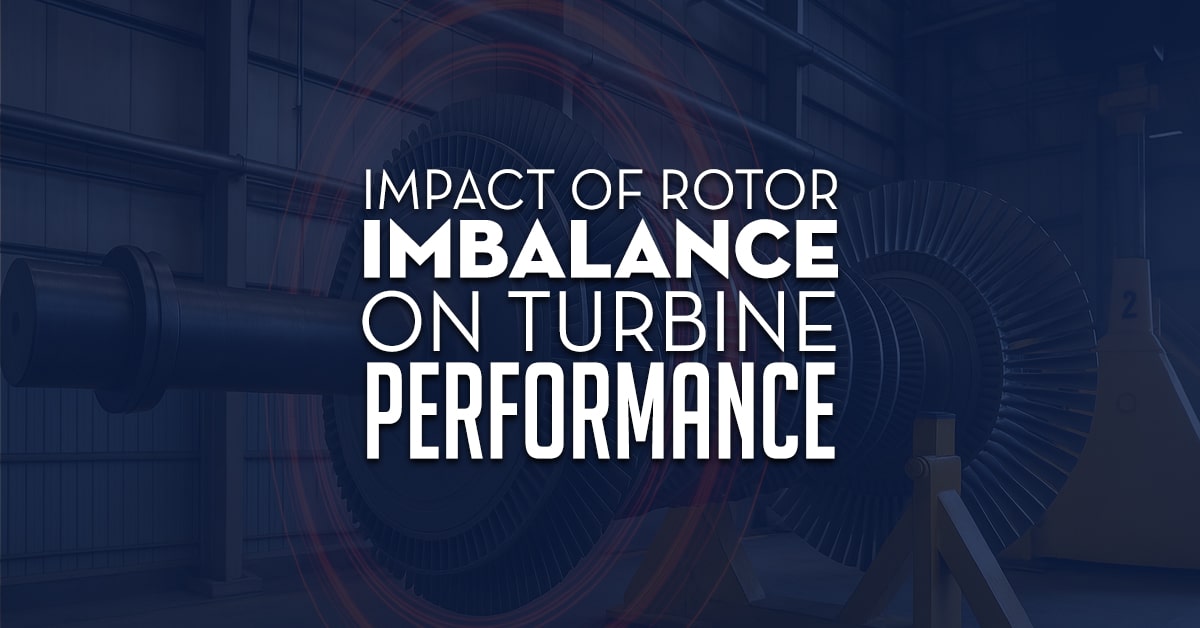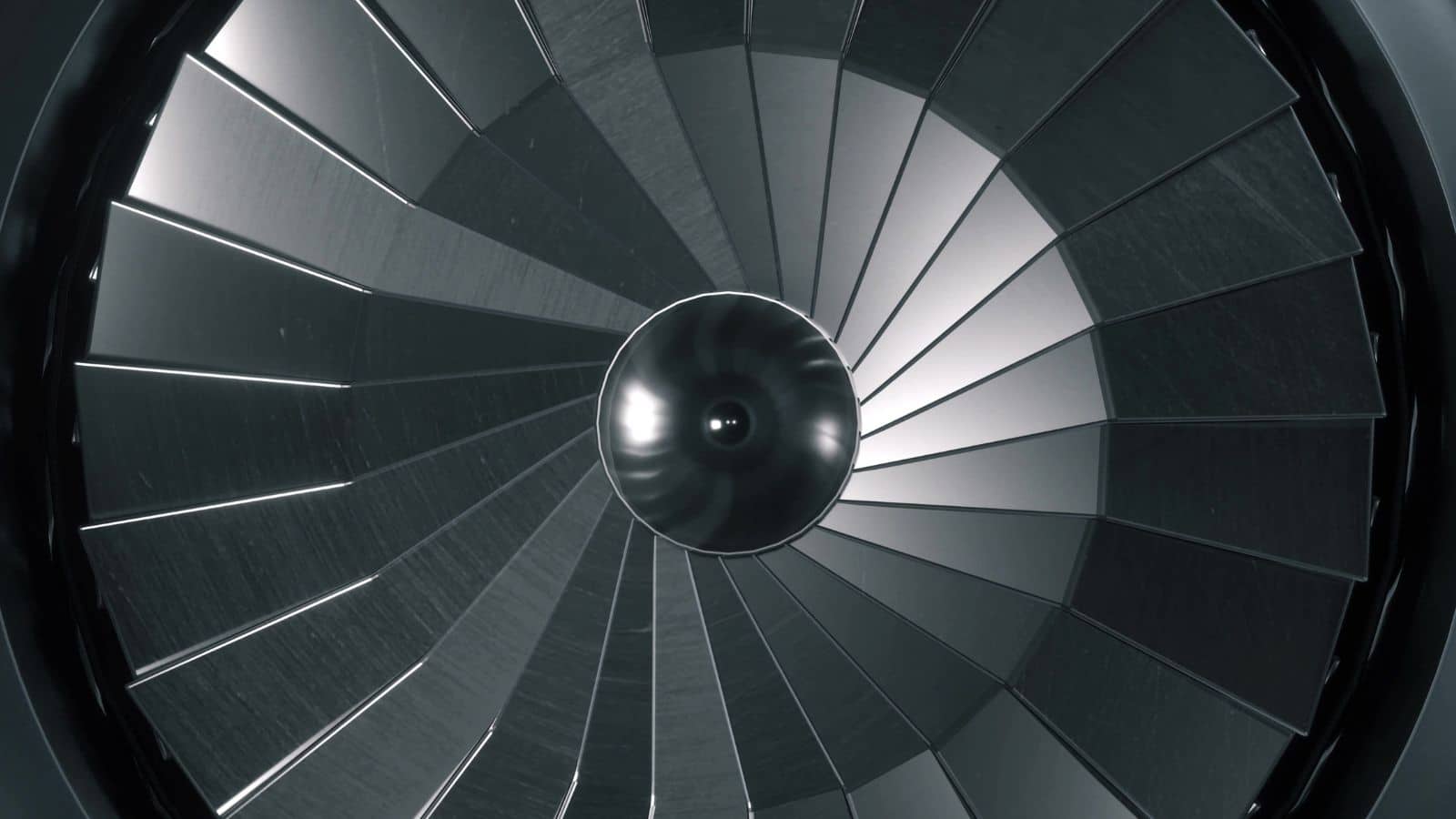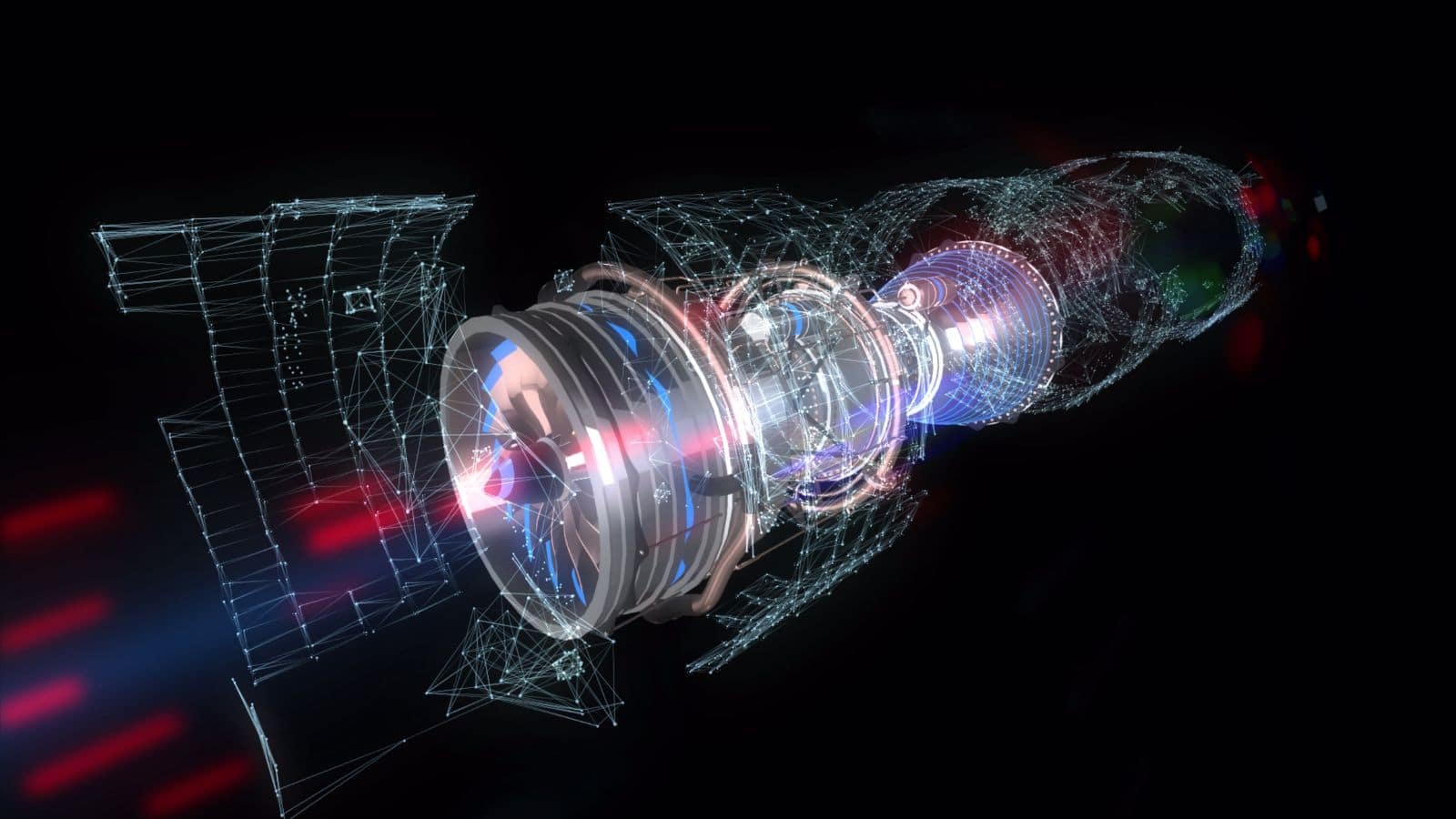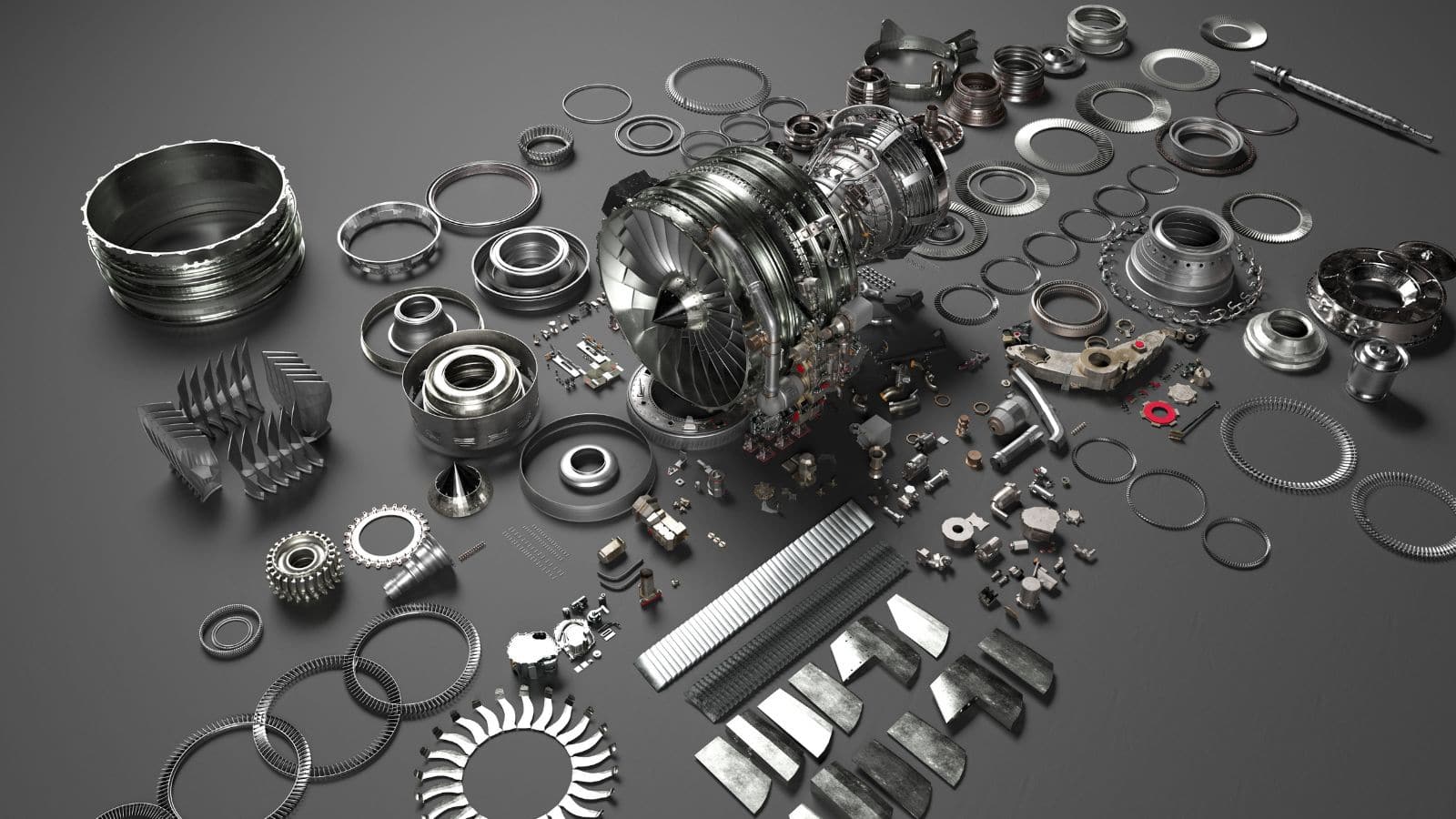Turbine rotor imbalance represents one of the most critical challenges facing power generation facilities worldwide. The impact of rotor imbalance on turbine performance is significant and far-reaching. When a rotor imbalance occurs, it creates vibration, reduces efficiency, and threatens equipment reliability. Understanding how to detect, analyze, and correct these component repairs is essential for maintaining optimal turbine performance.
At Allied Power Group, we specialize in helping operators address imbalance issues through advanced diagnostic techniques and proven rotor repair correction methods. This comprehensive guide examines how mass imbalance develops, its impact on turbine performance, and the available solutions to restore balanced rotor operation.
Understanding Rotor Imbalance Fundamentals
Rotor imbalance happens when mass distribution around the rotational axis becomes uneven. In a perfectly balanced rotor, the center of mass aligns precisely with the rotation axis. When this alignment shifts—even slightly—centrifugal forces during rotation create imbalance forces that generate destructive vibration.
Static and Dynamic Imbalance
Static imbalance occurs when the center of mass doesn’t align with the rotation axis along one plane. Picture a wheel with a weight attached to one side—gravity pulls the heavy side down when the wheel stops. This condition causes the unbalanced rotor to settle in a predictable position.
Dynamic imbalance involves mass distribution problems across multiple planes along the rotor length. The assembled rotor may appear balanced when stationary, but generates significant vibration at operating speeds. This more complex condition requires sophisticated correction techniques.
Understanding static and dynamic balancing differences is crucial because correction methods differ. Simple static issues might need adjustment in one location, while dynamic problems require corrections at multiple points along the rotor system.
Causes of Rotor Imbalance
Multiple factors contribute to imbalance development in gas turbine and rotor applications:
- Manufacturing Tolerances: Even precision manufacturing leaves tiny variations. When turbine components are assembled, these small differences can accumulate, creating an imbalance due to manufacturing imperfections.
- Erosion and Wear: Operating conditions gradually erode rotor blade surfaces. Particulates in air or combustion gases remove material unevenly, shifting mass distribution over time.
- Corrosion: Chemical reactions attack different areas at varying rates, creating uneven material loss that develops into an imbalance.
- Foreign Object Damage: Impact from debris damages one rotor blade more than others, creating a sudden mass imbalance.
- Thermal Distortion: Repeated heating and cooling cycles can warp components, particularly in gas turbine hot sections where temperatures approach material limits.
- Assembly Errors: Improper installation, incorrect torque specifications, or missing components during maintenance create an imbalance in the assembled rotor.
- Blade Deposits: Accumulation of dirt, ice, or combustion residues on rotor blade surfaces adds mass unevenly.
At Allied Power Group, we help operators identify root causes through comprehensive vibration analysis and inspection programs that detect problems before they escalate into failures.
Effects of Rotor Imbalance on Turbine Performance
The impact of rotor imbalance extends far beyond simple vibration—it affects virtually every aspect of turbine operation.
Mechanical Damage
Excessive rotor vibration accelerates wear on bearings, seals, and shaft couplings. The oscillating forces fatigue components, reducing service life and increasing maintenance costs. Severe cases can cause catastrophic failures that destroy expensive turbine components.
Reduced Efficiency
Aerodynamic imbalance disrupts airflow patterns through the turbine, reducing aerodynamic performance. This translates to decreased power output even when operating conditions remain constant. Gas turbine efficiency suffers as flow disturbances increase losses.
Power Generation Impact
The effect of rotor imbalance on power production can be substantial. Studies show that even a moderate imbalance reduces turbine performance by 5-15%. For large power generation operations, this efficiency loss represents a significant revenue reduction over time.
Operational Limitations
Excessive vibration may force operators to reduce rotor speed or shut down entirely, limiting power generation capacity. Maintaining optimal performance becomes impossible when imbalance forces exceed design limits.
Structural Concerns
Vibration transmits through mounting structures, potentially affecting foundation stability in stationary installations. This structural loading wasn’t accounted for in the original designs based on balanced rotor assumptions.
Detection and Diagnosis Methods
Identifying rotor unbalance requires systematic monitoring and analysis approaches:
Vibration Monitoring
Continuous or periodic vibration analysis provides the most direct indication of imbalance. Sensors measure vibration amplitude and frequency at critical locations. The frequency of the rotor—the rate at which the shaft completes rotations—appears prominently in vibration spectra when imbalance exists.
Advanced systems track vibration trends over time, detecting gradual changes indicating developing problems. Sudden increases in vibration magnitude often signal acute issues requiring immediate attention.
Phase Analysis
Determining vibration phase—the timing relationship between shaft position and vibration peaks—helps locate imbalance. This information guides correction by showing where mass should be added or removed.
Computational Methods
Numerical simulation and CFD analysis model rotor dynamics under various conditions. These experimental and numerical investigation approaches predict how different imbalance scenarios affect performance. Simulation results help diagnose complex situations where physical measurements alone prove insufficient.
At Allied Power Group, we thoroughly understand imbalance issues and develop effective solutions tailored to specific turbine configurations.
Performance Monitoring
Tracking power output relative to operating conditions reveals efficiency degradation caused by imbalance. Performance assessment in gas turbine applications compares current efficiency against baseline values or manufacturer specifications, highlighting deterioration requiring investigation.
Rotor Balancing Solutions
Correcting rotor imbalance restores smooth operation and maintains optimal turbine performance. Several approaches exist depending on severity and turbine type.
Field Balancing
In-place rotor balancing corrects the imbalance without disassembly. Technicians measure vibration, calculate required corrections, and add or remove mass at specific locations. This dynamic balance procedure typically requires multiple iterations to achieve acceptable vibration levels.
Modern equipment uses sophisticated algorithms to process vibration data to determine precise correction amounts and locations. Field balancing minimizes downtime compared to removal and shop balancing.
Shop Balancing
Severe imbalance or the need for precision may require shop balancing using dedicated equipment. Specialized balancing machines spin the rotor at various speeds while measuring imbalance forces precisely. Corrections continue until vibration falls below specified thresholds.
Component Replacement
When damage causes an imbalance, replacing affected rotor blade sections or entire components may be more economical than attempting corrections. New components restore original mass distribution and aerodynamic characteristics.
Key Balancing Considerations
- Correction planes: Identify optimal locations for adding or removing mass
- Balance tolerance: Determine acceptable residual imbalance levels
- Operating speed range: Ensure balance quality across the full speed spectrum
- Environmental factors: Account for temperature and loading conditions
Impact on Different Turbine Types
Gas Turbines
In industrial gas turbines, the axial turbine and compressor rotors operate at extremely high speeds where even tiny imbalance creates enormous forces. The performance of the turbine in these applications directly impacts efficiency, making rotor dynamic balancing critical for economical operation.
Steam Turbines
Large power generation steam turbines feature massive rotors where thermal effects and shaft deflection under load complicate balancing. These machines require sophisticated rotor dynamics analysis to maintain acceptable vibration levels.
Advanced Diagnostic Techniques
Modern technology enables increasingly sophisticated approaches to understanding and correcting rotor imbalance:
Experimental and Numerical Investigation
Combining physical testing with simulation provides comprehensive insights. Experimental data validates numerical models, while simulation explores scenarios difficult to test physically. This integrated approach accelerates problem diagnosis and solution development.
CFD Analysis
Computational fluid dynamics models airflow through the turbine, revealing how aerodynamic imbalance affects turbine performance. These simulations identify flow disruptions and efficiency losses caused by uneven blade properties.
Modal Analysis
Understanding rotor frequency characteristics and vibration modes helps identify resonance conditions where operating speeds coincide with natural frequencies, amplifying vibration. Avoiding these resonances through speed restrictions or structural modifications prevents damage.
Condition Monitoring Systems
Automated systems continuously track key performance indicators, alerting operators when measurements deviate from normal ranges. Early detection enables proactive intervention before minor imbalance escalates into serious problems.
At Allied Power Group, we implement comprehensive monitoring programs combining these technologies to maintain optimal performance across diverse turbine installations.
Optimization Strategies for Maximum Performance
Beyond simply correcting imbalance, operators can implement strategies maintaining best performance:
- Regular Inspection Schedules: Periodic examinations detect developing issues before they significantly impact operation.
- Preventive Maintenance: Scheduled servicing addresses wear and deposits before they create noticeable imbalance.
- Environmental Protection: Filtration systems reduce erosive particle ingestion. Coatings protect against corrosion.
- Operating Parameter Optimization: Adjusting speed, load, and environmental controls minimizes stresses contributing to component degradation.
- Performance Trending: Historical data analysis identifies gradual efficiency declines indicating developing problems.
- Blade Maintenance: Regular cleaning removes deposits. Repair programs address minor damage before it worsens.
Conclusion
Rotor imbalance represents a critical concern for maintaining optimal turbine performance across gas turbine, steam turbine, and other rotating machinery applications. The impact extends beyond simple vibration to encompass reduced efficiency, decreased power generation, accelerated wear, and potential catastrophic failures. Understanding how mass imbalance develops—whether from manufacturing variations, operational wear, damage, or environmental factors—enables operators to implement effective prevention and correction strategies, with modern diagnostic capabilities combining vibration analysis, performance monitoring, and advanced numerical simulation providing unprecedented insights into rotor dynamics.
The economic implications cannot be overstated. Reduced power output, increased maintenance costs, and accelerated component replacement combine to significantly impact profitability, while even small efficiency losses accumulate to substantial revenue reductions for power generation facilities. Conversely, maintaining optimal performance through effective imbalance management delivers clear financial benefits—maximized power generation, extended component life, and reduced maintenance requirements that improve return on investment.
As turbines grow larger and more complex, rotor dynamic balancing becomes increasingly critical. The forces involved scale rapidly with size and speed, making even tiny imbalances consequential in advanced gas turbine designs pushing performance boundaries. Organizations seeking to optimize turbine performance should invest in proper monitoring equipment, train personnel in diagnostic techniques, and establish clear protocols for responding when vibration or performance metrics indicate developing problems—investments that pay dividends through improved reliability, efficiency, and component longevity.
Frequently Asked Questions
How does rotor imbalance affect turbine performance and power generation?
A: Rotor imbalance reduces turbine performance through multiple mechanisms. Aerodynamic imbalance disrupts airflow patterns, reducing power output even at optimal operating conditions. Vibration increases mechanical losses and forces speed reductions. Studies indicate moderate imbalance can decrease efficiency by 5-15%, significantly impacting revenue for operators managing large installations.
What’s the difference between static and dynamic balancing for turbines?
A: Static imbalance involves uneven mass distribution in one plane, causing the rotor to settle in a predictable position when stopped. Dynamic imbalance involves mass distribution problems across multiple planes along the rotor length. An assembled rotor may show static balance but still have dynamic problems that generate vibration at operating speeds. Dynamic balance correction requires adjustments at multiple locations.
How do operators detect rotor imbalance in turbines?
A: Vibration analysis provides the primary detection method, measuring amplitude and frequency at critical locations. The frequency of the rotor appears prominently in spectra when imbalance exists. Phase analysis determines timing relationships helping locate imbalance. Performance monitoring reveals efficiency degradation. Advanced approaches combine experimental and numerical investigation with CFD analysis to comprehensively understand imbalance issues.
Can rotor balancing be performed without removing the turbine rotor?
A: Yes. Field rotor balancing corrects imbalance without disassembly by measuring vibration, calculating required corrections, and adding or removing mass at specific locations. This dynamic balance procedure minimizes downtime compared to removal and shop balancing. However, severe imbalance or precision requirements may necessitate shop balancing using specialized equipment.
What causes rotor imbalance to develop in operating turbines?
A: Multiple factors contribute including manufacturing tolerances that create imbalance due to manufacturing variations, erosion from particulates, uneven corrosion, foreign object damage to one rotor blade, thermal distortion from heating cycles, assembly errors, and deposits accumulating unevenly. Operating conditions in gas turbine applications expose components to harsh environments accelerating degradation.
How does rotor dynamics affect turbine operation and what factors influence imbalance severity?
Rotor dynamics encompasses the complex interactions between rotating components, forces, and support systems, where the speed of the rotor is critical—as rotational velocity increases, even minor mass imbalances generate exponentially larger centrifugal forces that severely compromise operation. The impact on performance manifests through increased vibration, reduced efficiency, and accelerated wear, while rotor performance is influenced by manufacturing tolerances, thermal expansion, erosion, blade deposits, and mechanical damage from foreign objects.



